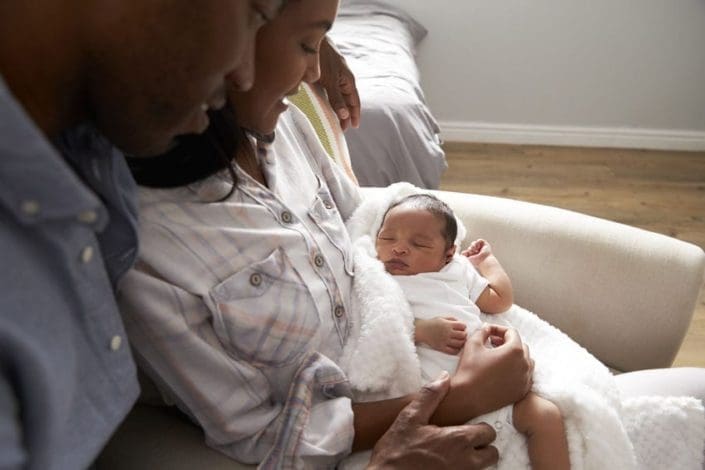
Circumcision is a procedure where the foreskin (the skin that covers the tip of the penis) is removed. Circumcision isn’t required. If parents choose this for their baby, the procedure is usually done on the first or second day after birth in a healthy baby. However, it can be done within 10 days of birth. Circumcision is riskier and more complicated in infants older than 2 months of age and in older boys and men.
Circumcisions are performed by a doctor in a hospital or outpatient office. They also can be done at home by a hired professional as part of a religious or cultural ceremony.
During the procedure, the doctor will numb the area around the penis with a local anesthetic (medicine that numbs only a specific part of the body). This makes the procedure less painful for the baby. The anesthetic may be given as an injection or applied as a cream. The procedure takes about 20 minutes.
Path to improved health
After circumcision, there are steps you’ll need to follow to help the penis heal.
- Gently clean the area with water each time you change your baby’s diaper.
- Use mild soap and water to clean any stool off the penis. This will help prevent infection.
- If there is a bandage on the penis, it will probably fall off when your baby urinates. Ask your doctor if you should leave the bandage off or replace it with a new bandage each time you change your baby’s diaper.
- Your baby’s urine or the contact from his diaper may irritate the newly exposed skin on the tip of the penis. You can treat this by applying petroleum ointment (brand name: Vaseline) directly on the area. It should get better after a few days.
Healing from circumcision usually takes about 7 to 10 days. Some swelling of the penis is normal. It’s also common for a yellow discharge or coating to form over the tip of the penis. Do not try to take this off. It will go away on its own.
If you decide not to circumcise, there are still some steps you should take to care for your baby’s penis. Keep it clean with soap and water to reduce the risk of infection. When your son gets older, his foreskin will separate from the tip of his penis. This is called retraction and it can happen at different times. Most boys can retract their foreskin by the time they are 5 years of age. Do not try to force the foreskin to retract before it is ready. This can damage the penis and cause pain and other problems. Once the foreskin is ready to retract, teach your son how to gently pull the foreskin back and clean the skin underneath. He should wash beneath his foreskin every day while bathing or showering.
Things to consider
Circumcision is a personal choice for you and your family. Talk to you doctor and consider the benefits and risks of circumcision. Factors such as your culture, religion, and personal preferences may affect your decision. It is best to decide before your baby is born. This way, you’ll know what to do while in the hospital.
The American Academy of Family Physicians (AAFP) recommends that parents talk to their family doctor about the potential benefits and risks of circumcision when making their decision.
The American Academy of Pediatrics (AAP) does not recommend that all male newborns should be circumcised. However, it believes that parents should have the option to decide for themselves
According to research, the potential medical benefits of circumcision include:
- A reduced risk of urinary tract infections (UTIs) as infants
- A reduced risk of rare penile cancer in adulthood
- A reduced risk of HIV and other sexually transmitted infections (STIs). However, preventing STIs is primarily based on a person’s sexual practices rather than circumcision.
Like any surgical procedure, circumcision does have some risks, including bleeding, infection, and pain. However, the rate of problems after circumcision is quite low and very treatable.
When to call your doctor
After the circumcision, you may notice a small amount of blood on your baby’s diaper. Contact your doctor if the bloodstain is larger than the size of a quarter. You should also call your doctor if:
- The wound doesn’t stop bleeding.
- Your baby has a temperature of 100.4°F or higher.
- Your baby doesn’t have a wet diaper within 6 to 8 hours after the circumcision.
- Redness and swelling around the tip of the penis doesn’t go away after 3 to 5 days, or it gets worse.
- The yellow discharge or coating on the tip of the penis doesn’t go away after 7 days.
- A Plastibell device was used, and it doesn’t fall off within 10 to 12 days.
Questions for your doctor
- What are the benefits and risks of circumcision?
- Will my baby feel any pain during circumcision?
- Before circumcision, will you apply the anesthetic as an injection or a cream?
- How will I know if my baby’s penis is infected?
- What soap do you recommend for washing the bandaged area?
Resources
![]()
Copyright © American Academy of Family Physicians
This information provides a general overview and may not apply to everyone. Talk to your family doctor to find out if this information applies to you and to get more information on this subject.






